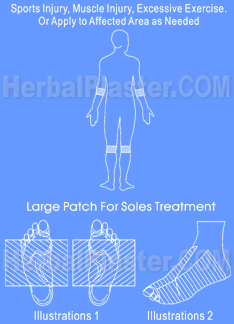|
|
Common Sports Injuries
|
|
|
|
Injuries among athletes fall into two basic categories: overuse injuries and acute injuries, with both types including injuries to the soft tissues
and bones.
- Overuse Injuries are caused by a series of small injuries to the same area of the body causing minor fractures, minimal muscle tears,
or progressive bone deformities.
- Acute Injuries are caused by a sudden trauma, and may include:
- contusions (bruises)
- sprains (a partial or complete tear of a ligament)
- strains (a partial or complete tear of a muscle or tendon)
- fractures
|
|
|
|
Sports and Spinal Cord Injuries:
Although rare in sports, 10 percent of all spinal injuries occur during sports, primarily diving, surfing, and football. Participants in contact sports
can minimize the risk of minor neck spinal injuries by doing exercises to strengthen their neck muscles and wearing appropriate protective
equipment.
Sports and Soft Tissue Injuries:
About 95 percent of sports injuries are due to minor trauma involving soft tissue injuries -- bruises, muscle pulls, sprains, strains, and cuts or
abrasions
|
|
|
|
Sprains - about one-third of all sports injuries are classified as sprains, a partial or complete tear of a ligament -- which is a tough band of
fibrous connective tissue that connects the ends of bones and stabilizes the joint.
Symptoms of a Sprain Often Include:
- a feeling that a joint is "loose" or unstable
- inability to bear weight because of pain
- loss of motion
- the sound or feeling of a "pop" or "snap" when the injury occurred
- swelling
- Strains - a strain is a partial or complete tear of a muscle or tendon. Muscle tissue is made up of cells that contract and make the body
move. A tendon consists of tough connective tissue that attaches muscles to bones.
- Contusions - the most common sports injury is a contusion, or bruise -- a result of a blunt injury causes underlying bleeding in a
muscle or other soft tissues.
Treatment for soft tissue injuries usually consists of Rest, Ice, Compression (wrapping with elastic bandages), and Elevation (R.I.C.E.) of the
injured arm, hand, leg or foot.
|
|
|
|
Sports and Skeletal Injuries:
A sudden, violent collision with another player, an accident with sports equipment, or a severe fall can cause skeletal injuries in the athlete,
including fractures.
- Fractures constitute a low 5 to 6 percent of all sports injuries. Most of these breaks occur in the arms and legs. Rarely are the spine and
skull fractured.
- Stress fractures occur frequently because of continuing overuse of a joint. The main symptom of a stress fracture is pain. The most
frequent places stress fractures occur are the tibia (the larger leg bone below the knee), fibula (the outer and thinner leg bone below the
knee), and foot.
|
|
|
|
|


